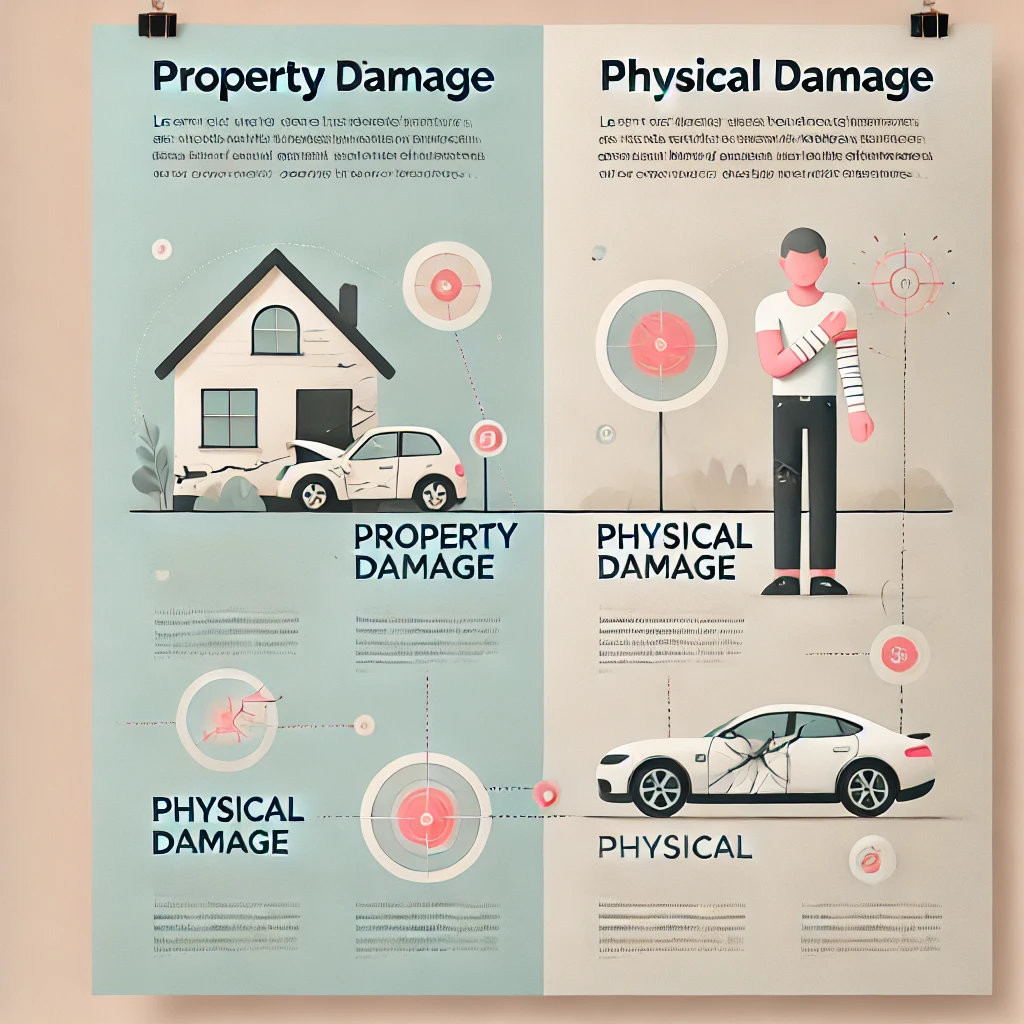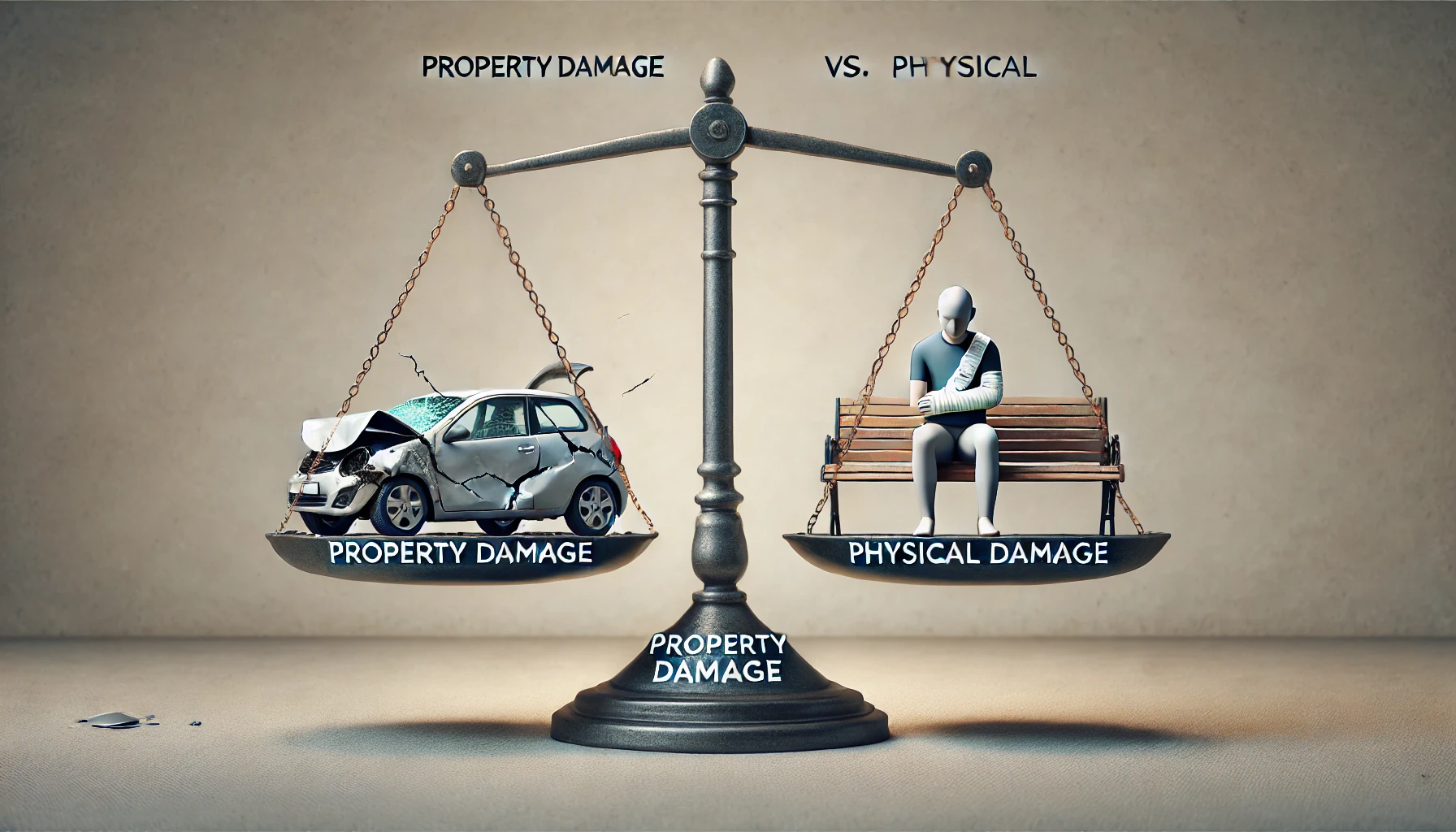What does property damage mean to you compared to physical damage? Understanding the distinctions between these two concepts is crucial, especially when you face a situation that requires clarity, such as filing an insurance claim. Let’s break down these terms to provide you with a clearer understanding, and hopefully, some peace of mind.

Understanding Property Damage
Property damage refers to harm inflicted on real or personal property. This includes any damage that affects the structure of a home or building, as well as any belongings inside that space. Think of it as the impact on the value and usability of your property.
For instance, if a storm damages your roof, leading to leaks and internal damage, the roof itself and everything affected within your home—from your furniture to your appliances—falls under property damage. This category can encompass everything from minor incidents, like scratches on furniture, to major disasters, like fire or flood.
Common Causes of Property Damage
Certain events frequently lead to property damage, and knowing them can make you more aware of potential risks.
- Natural Disasters: Hurricanes, floods, and wildfires can cause extensive damage to structures and belongings.
- Accidents: Simple mistakes, like leaving a candle unattended, can escalate into costly property damage.
- Neglect: Failing to maintain your property can lead to deterioration, which may be classified as property damage when selling or insuring your home.
Understanding these common causes can help you take preventative measures.
Breaking Down Physical Damage
Physical damage, on the other hand, specifically refers to the actual harm done to the physical structure of the property or its contents. This term focuses more narrowly on the integrity of materials and physical features, such as walls, floors, and items within your home.
For example, a crack in your wall after an earthquake is a clear case of physical damage. While it contributes to property damage, physical damage has a more specific focus on the harm done to physical materials.
Examples of Physical Damage
Recognizing physical damage can help you assess your situation more precisely:
- Structural Damage: This includes cracks in walls, damage to foundations, or collapsing ceilings.
- Cosmetic Damage: Even scratches, dents, or stains on walls and floors fall into this category.
- Interior Damage: Damage to furniture, appliances, and other personal belongings also constitutes physical damage.

Comparing Property and Physical Damage
Now that you have a grasp of these terms, let’s compare them directly.
| Aspect | Property Damage | Physical Damage |
|---|---|---|
| Definition | Damage that affects value and usability | Actual harm to physical materials |
| Scope | Broad, encompasses real and personal property | Narrow, focuses solely on physical harm |
| Examples | Damage from storms, neglect, accidents | Cracks in walls, scratches on furniture |
| Claim Impact | Influences total loss claims | Helps assess repairs and restoration |
By breaking this comparison down, you can see how property damage includes the broader impact of incidents, while physical damage zeroes in on the tangible harm. Understanding this difference can help you make informed decisions when seeking compensation from your insurance policy.
Your Insurance Claim Process
When dealing with property or physical damage, it becomes vital to understand how your insurance claims process can work for you. You need to know what your rights are and how to navigate discussions with your insurance company.
Documenting the Damage
You should start by documenting everything. Take photos of both property and physical damages. Keep records of conversations with your insurer and any repairs made. This documentation may serve as essential evidence when filing your claim.
- Photographs: Capture clear images of all damage.
- Inventory: List damaged items, including their value.
- Repair Estimates: Get professional opinions on repair costs.
Filing Your Claim
Once you have documented everything, it’s time to contact your insurance company. Here, you will navigate the claims process.
- Contact Your Insurer: Reach out as soon as possible after the damage occurs.
- File a Claim: Provide the documentation you gathered, and be clear about the extent of your property and physical damage.
- Follow Up: Keep in touch with your claims adjuster. Ensure they understand all aspects of your claim.
When to Get Help
Sometimes, dealing with claims can become overwhelming. Navigating insurance policies can lead to confusion, especially if your claim gets denied or undervalued.
It’s beneficial to consult with a Public Adjuster at this point. They act as a mediator between you and your insurance provider, ensuring you receive the compensation you deserve without the stress of negotiating alone.

How Otero Property Adjusting & Appraisals Can Help You
If you find yourself struggling with property claims or feel uncertain about the process, consider reaching out to Otero Property Adjusting & Appraisals. The team understands the intricacies of property damage and physical damage claims, and they are equipped to assist you every step of the way.
Why Choose Otero?
- Free Initial Inspection: You can have a professional inspect your property damage at no cost or obligation.
- Advocacy: Otero’s skilled Public Adjusters negotiate on your behalf, pushing for fair compensation.
- No Win, No Fee: The team works hard to ensure you get paid, and they only charge if you do.
The Importance of Knowing Your Coverage
As you navigate through property and physical damage, understanding your insurance coverage is crucial. You need to know what limitations or exclusions exist in your policy. This knowledge might empower you during claims or inspire you to make adjustments before disaster strikes.
Types of Coverage
- Dwelling Coverage: This covers the structure of your home and any permanent structures on your property.
- Personal Property Coverage: This helps you replace or repair items inside your home that are damaged.
- Liability Coverage: If someone suffers an injury on your property, this can assist with legal claims.
Reviewing Your Policy
Take time to read through your policy. Make a checklist of coverage types and what is included or excluded.
- Assess Limits: Are your limits high enough to cover potential damages?
- Understand Exclusions: What kinds of damages aren’t covered? Knowing this can prevent unwelcome surprises later.
Having this understanding will not only streamline your claim process but also fortify your peace of mind in protecting your home and belongings.
Conclusion
The distinction between property damage and physical damage can significantly impact your insurance claims and overall understanding of your property risks. Learning to recognize the signs of both types of damage and knowing how to proceed can help you protect your interests effectively.
As you navigate this information, consider the support of Otero Property Adjusting & Appraisals. The assurance of having professionals on your side can alleviate the stress and confusion that often accompanies property damage situations.
Remember, proactive measures—like understanding your coverage and preparing for the unexpected—can empower you to handle property and physical damage with confidence. Always know that you’re not alone in this journey, and there are resources and professionals ready to help you reclaim what is rightfully yours.

